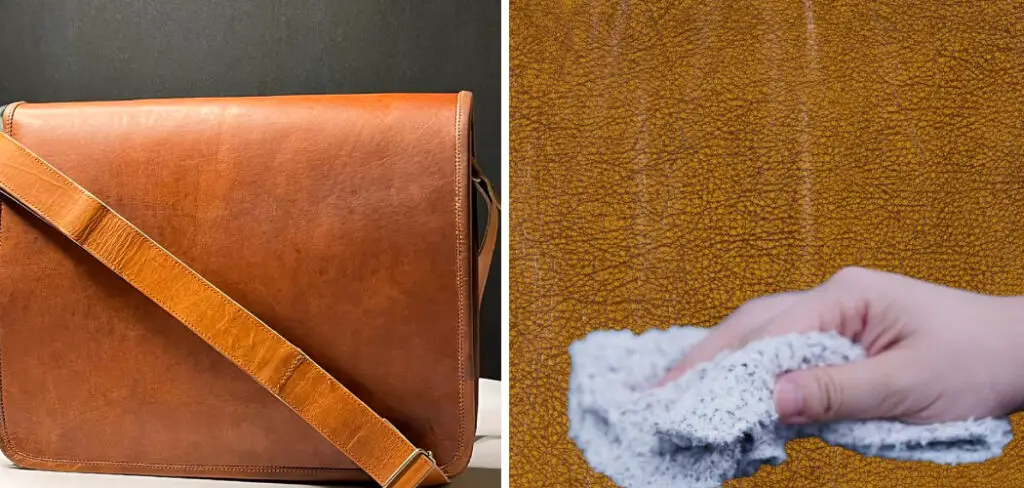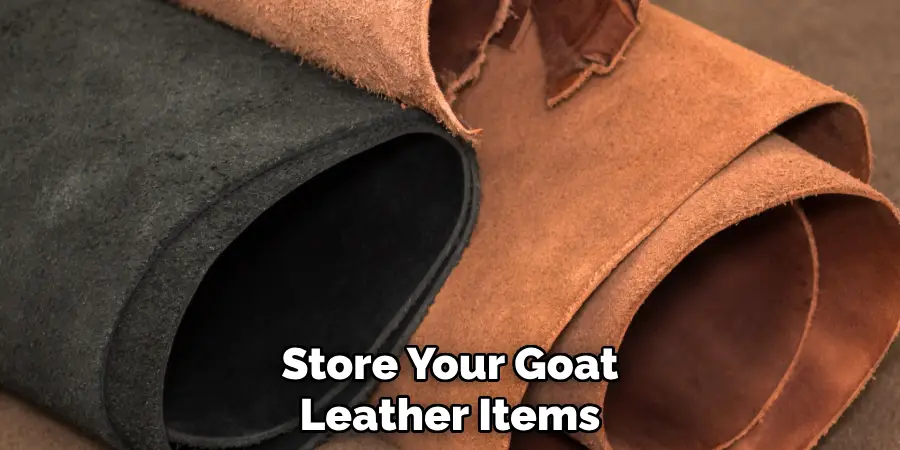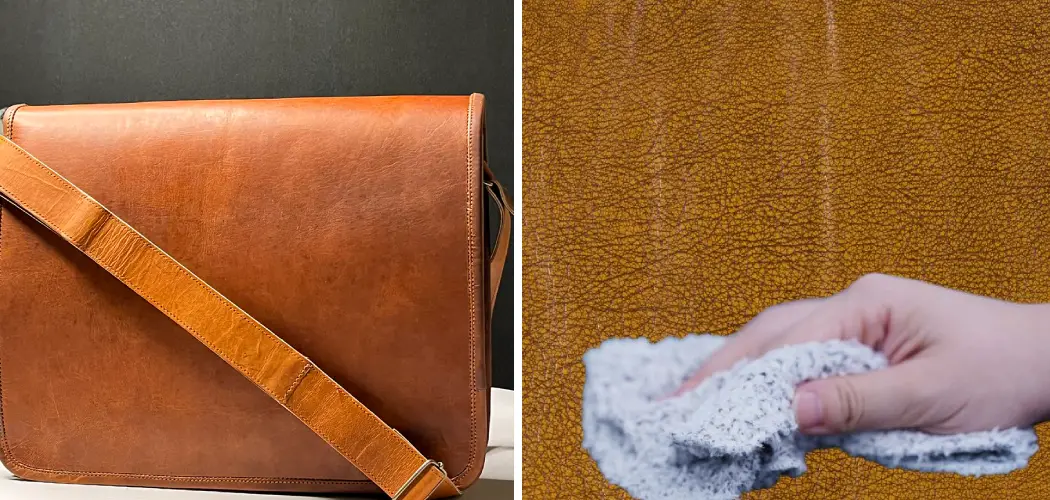There are many reasons why you should learn to clean goat leather. Firstly, goat leather is a popular material for making various products such as shoes, bags, and jackets. Due to its softness and durability, it is often the preferred choice of leather for these items. However, like any other type of leather, goat leather also requires proper care and maintenance to ensure its longevity.

The main advantage of cleaning goat leather is that it can improve the longevity and appearance of your goat leather products. Goat leather is known for its softness, durability, and water resistance, making it a popular choice for clothing, footwear, bags, and accessories.
However, just like any other type of leather, goat leather requires proper care and maintenance to ensure its quality over time. Read this blog post to learn how to clean goat leather.
Step by Step Guide to Cleaning Goat Leather
Step 1: Inspect the Leather
Before cleaning your goat leather product, it is important to inspect its condition. Check for any stains, dirt or marks on the surface of the leather. This will help you determine the type of cleaning method and products needed for your specific item.
Step 2: Remove Excess Dirt
Use a soft cloth or brush to gently remove any excess dirt or debris from the surface of the leather. Be careful not to damage or scratch the leather while doing this. You can use a mixture of mild soap and lukewarm water to create a cleaning solution for your goat leather. Avoid using harsh chemicals or detergents as they can damage the leather.
Step 3: Test on Inconspicuous Area
Before applying the cleaning solution to the entire surface, it is important to test it on a small and inconspicuous area of the leather. This will ensure that the solution does not cause any discoloration or damage. Using a soft cloth, apply the cleaning solution to the leather in a gentle circular motion. Make sure to cover the entire surface evenly.

Step 4: Wipe with Damp Cloth
After applying the cleaning solution, use a damp cloth to wipe off any excess soap or dirt from the leather. Again, be gentle and avoid rubbing too hard. Use a dry cloth to soak up any remaining moisture on the leather. Then, let it air dry in a cool and well-ventilated area. Avoid direct sunlight or heat as it can cause the leather to crack.
Step 5: Apply Leather Conditioner
Once the leather is completely dry, you can apply a leather conditioner to keep it soft and supple. Gently rub the conditioner onto the surface of the leather using a clean cloth. After applying the conditioner, use a soft cloth to buff the leather in a circular motion. This will help bring out its natural shine and smoothness.
Step 6: Store Properly
When not in use, make sure to store your goat leather products in a cool and dry place. Avoid keeping them in plastic bags or containers as it can cause the leather to dry out.
By following these simple steps, you can effectively clean your goat leather products and keep them in top condition for years to come. Remember to always be gentle and avoid using harsh chemicals or abrasives on the leather.
Tips for How to Clean Goat Leather
- Wear gloves to protect your hands from harsh chemicals and dirt while cleaning goat leather. You can also use disposable gloves that are thick enough to protect you from the chemicals but thin enough to allow for easy movement and handling of the leather.
- Always test a small inconspicuous area before cleaning the entire surface. This will help avoid any potential damage or discoloration of the leather.
- Use a soft, damp cloth to wipe away any surface dirt or dust from the goat leather. Avoid using abrasive materials or harsh chemicals as they can damage the delicate texture of the leather.
- For tougher stains and grime, mix a small amount of mild soap with warm water and use a clean cloth to gently scrub the affected area. Remember to always test on a small area first before moving on to larger areas.
- After cleaning, make sure to thoroughly rinse off any soap residue with a clean damp cloth. Residual soap can damage the leather if left behind.
- Dry the leather in a well-ventilated area away from direct heat sources or sunlight. Avoid using hair dryers or other heating devices as they can cause the leather to crack or shrink.
- Once the leather is completely dry, use a leather conditioner or cream specifically designed for goat leather to restore its natural oils and maintain its softness and shine.

Types of Stains on Goat Leather
Before we dive into the cleaning process, let’s first identify the different types of stains that can occur on goat leather. This knowledge will help you determine which cleaning method works best for each type of stain.
- Water-based stains: These include spills from water, soda, juice, or other liquids. They are relatively easy to remove if treated immediately.
- Oil-based stains: These are made from greasy substances such as oil, butter, or lotion. They can be trickier to remove compared to water-based stains and may require special cleaning products.
- Ink stains: These are caused by pen or marker marks on the leather. They can be challenging to remove and may require professional cleaning.
- Mold and mildew stains: If your goat leather item has been stored in a damp or humid environment, it may develop mold or mildew stains. These can be harmful to both the leather and your health if not removed properly.
By identifying the type of stain, you can determine the best course of action for cleaning it.
Are There Any Professional Services Available for Cleaning Goat Leather?
Yes, there are professional leather cleaning services available that specialize in removing stains from goat leather. These services have the necessary products and expertise to effectively clean and treat different types of stains without damaging the leather.
If you’re unsure about how to remove a stubborn stain or want to ensure that your goat leather item is cleaned properly, it’s best to seek out these professional services. They may cost more than DIY methods, but they can save you the hassle of potentially damaging your item or not getting the stain completely removed.
How Do You Prevent your Goat Leather From Cracking After Cleaning?
Goat leather is a popular choice for clothing, shoes, and accessories due to its durability and softness. However, like any other type of leather, goat leather can crack if not properly cared for. Cracking can occur due to various reasons such as exposure to heat or cold, lack of moisture, and improper cleaning techniques.
To prevent your goat leather from cracking after cleaning, here are some tips to follow:
1. Use a Gentle Cleaning Solution
When it comes to cleaning goat leather, it is important to use a gentle cleaning solution that is specifically designed for leather. Avoid using harsh chemicals or detergents as they can strip the leather of its natural oils and cause it to dry out, leading to cracks. Instead, opt for a mild soap or leather cleaner that is suitable for goat leather.

2. Avoid Excessive Water
Goat leather is sensitive to water, so it is important to avoid using excessive amounts of water when cleaning it. Too much water can cause the leather to shrink and become stiff, making it prone to cracking. Instead, use a damp cloth or sponge to gently clean the leather, and immediately dry it with a soft towel.
3. Condition Regularly
To keep your goat leather soft and supple, it is essential to condition it regularly. Conditioning helps to replenish the natural oils in the leather that can be lost during cleaning or through everyday wear. Use a high-quality leather conditioner that is suitable for goat leather and follow the instructions on the product for best results.
4. Keep Away from Heat and Sunlight
Exposure to heat and sunlight can cause goat leather to dry out and become brittle, leading to cracks. Therefore, it is important to store your goat leather items in a cool, dry place away from direct sunlight or any sources of heat such as radiators or fireplaces. Avoid leaving them in a hot car or near a window where they can be exposed to high temperatures.
5. Store Properly
How you store your goat leather items is also crucial in preventing cracking after cleaning. Make sure to keep them in a well-ventilated area and avoid storing them in plastic bags, as this can trap moisture and cause the leather to mold. Instead, use a breathable fabric or paper bag to store your goat leather items.

By following these tips, you can keep your goat leather looking beautiful and prevent it from cracking after cleaning. With proper care, your goat leather items will last for years to come, making them a worthwhile investment in your wardrobe.
Conclusion
In conclusion, taking care of your goat leather items is essential in preventing cracking and ensuring their longevity. By using a gentle cleaning solution, avoiding excessive water, conditioning regularly, keeping them away from heat and sunlight, and storing them properly, you can maintain the softness and durability of your goat leather pieces.
While there may be some disadvantages to cleaning goat leather, such as its sensitivity to water and the need for regular conditioning, the benefits far outweigh any drawbacks. I hope this article has been beneficial for learning how to clean goat leather. Make Sure the precautionary measures are followed chronologically.

